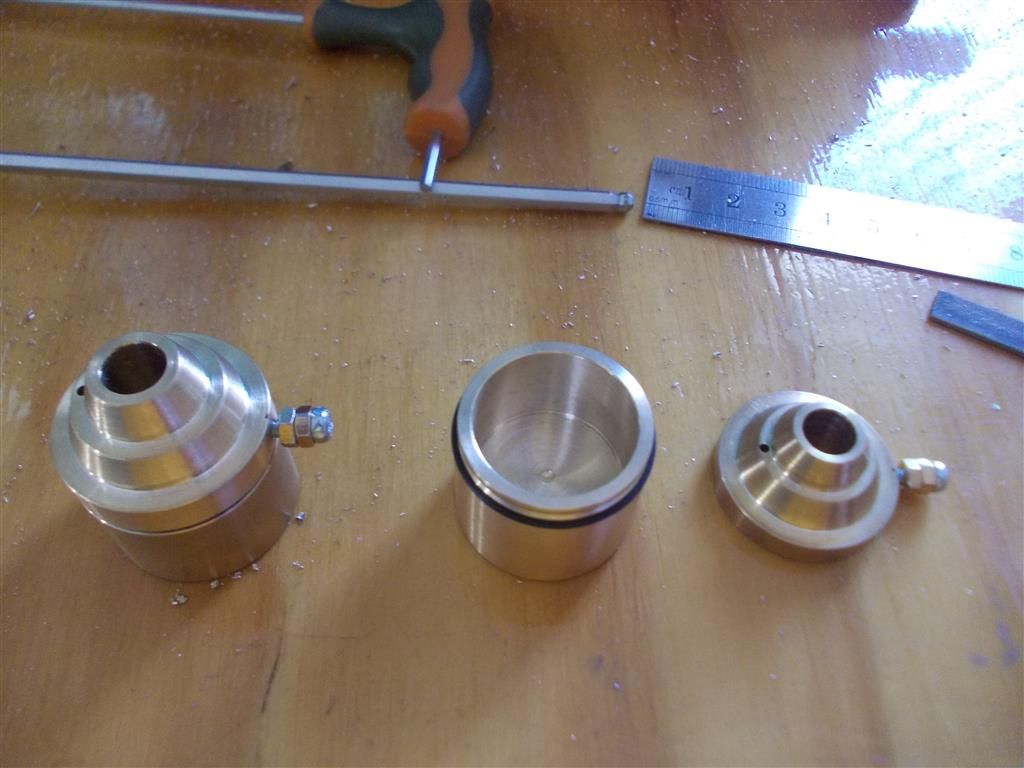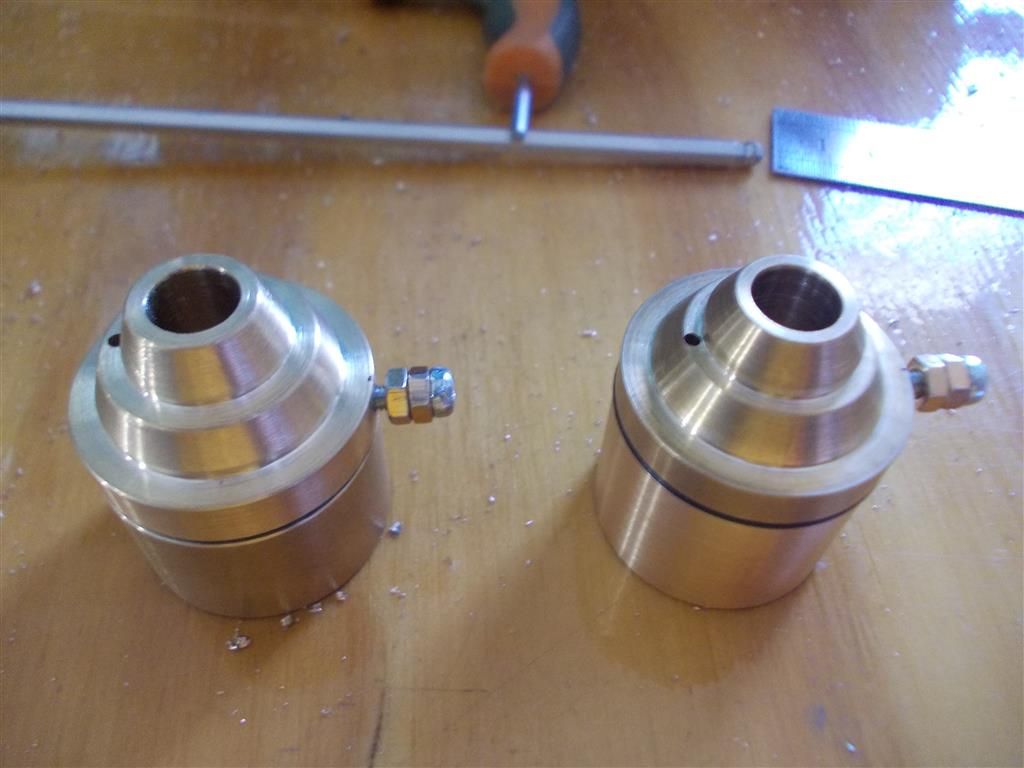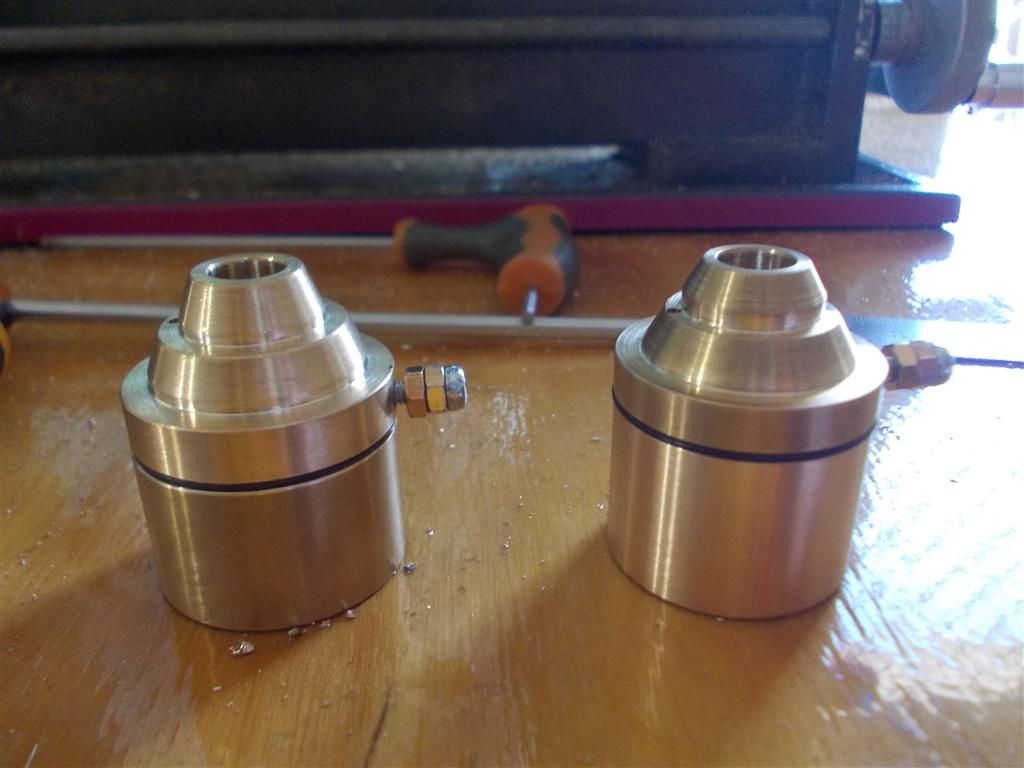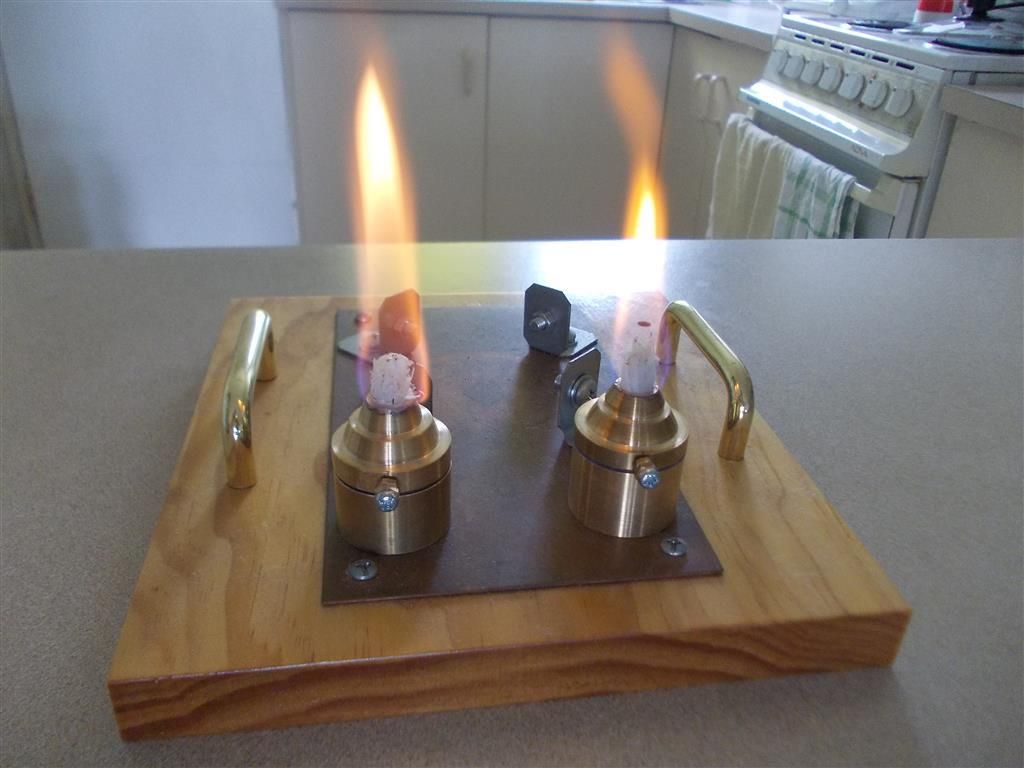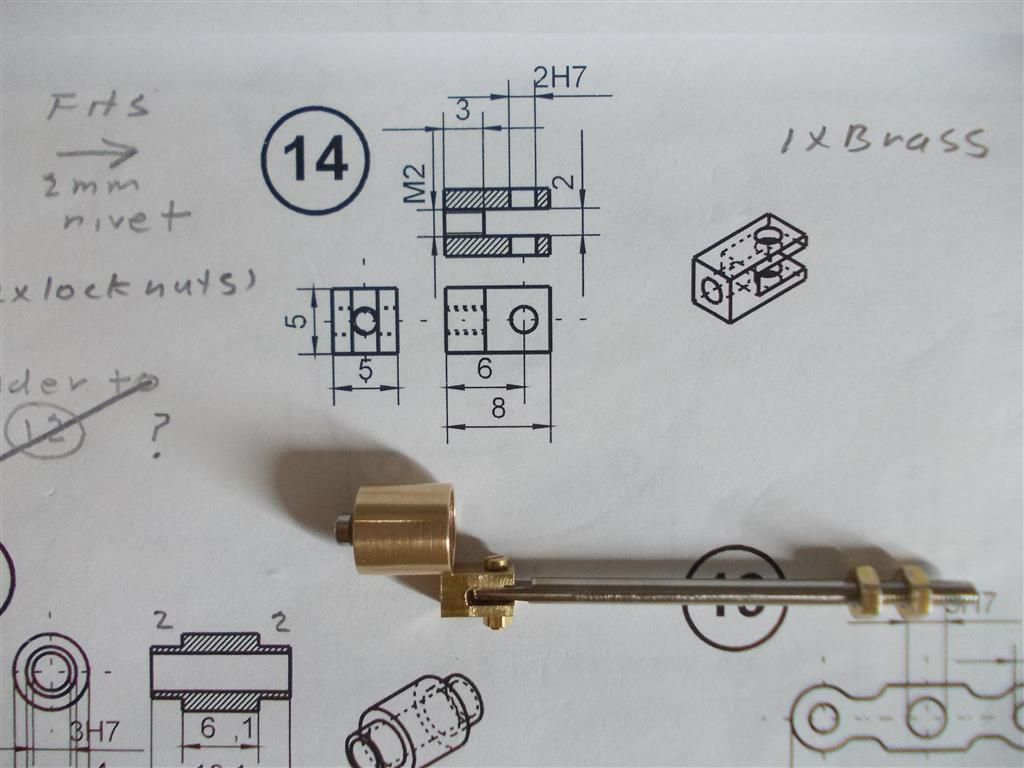If in future you want to try graphite, when you machine it mount the suction end of the vacuum cleaner just opposite the tool on the lathe. Yes you will get black hands.
Metal pistons sometimes need a very light/low viscosity oil, the same oil is ok for the bearings, and in most circumstances the gland for the displacer rod. Some of the gland bushes in my motors are made of Carbon impregnated Teflon, and should not be oiled, nor should the one with a cast iron bush. Some "experts" say that ball raced should have the seals removed, the grease removed and replaced with low viscosity oil, I leave them alone.
I think foundries use graphite in block form, I'd like to try it one day. There used to be a company in Christchurch (NZ) that made carbon motor brushes, but I have not seen them since the earth quake 5 years ago, business's have moved all over the place, it's hard to find some of them, others closed or left town.
Ian S C
Gordon Tarling.




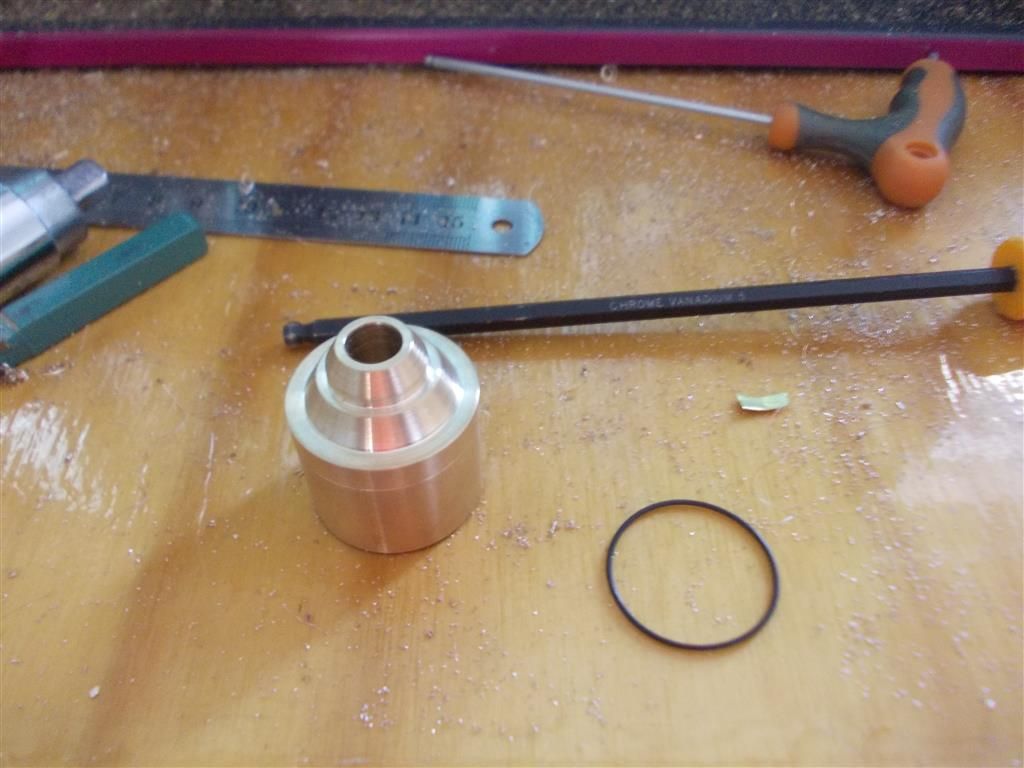
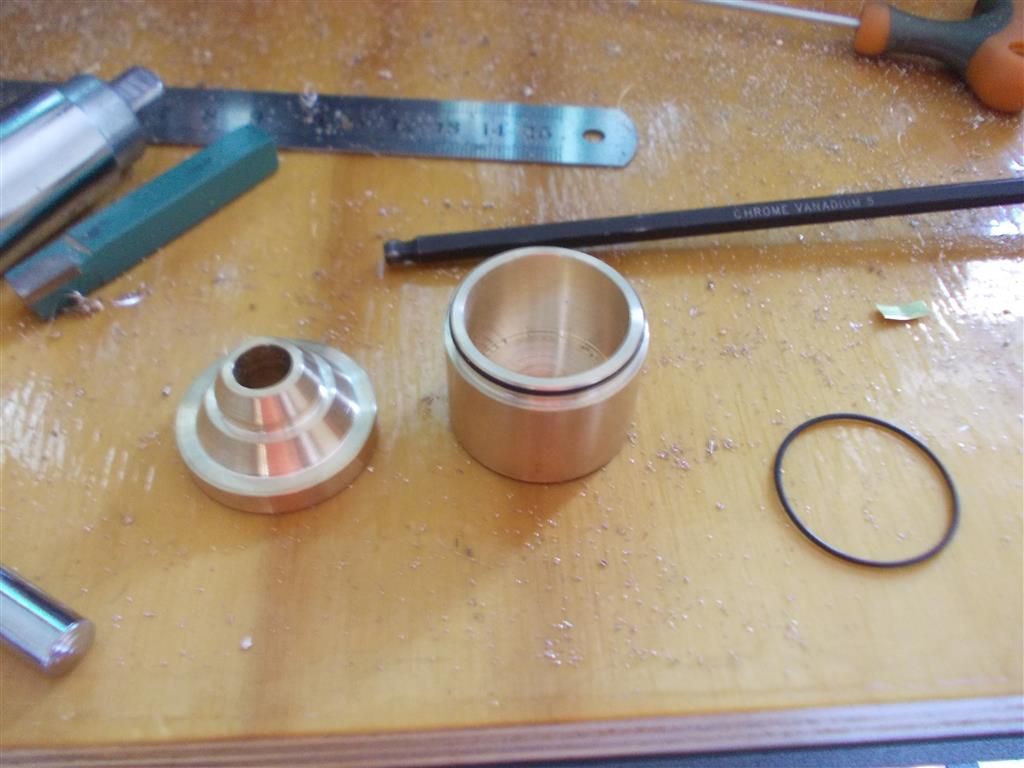
 in the top of the burner, this is needed to allow air in as the meths is burnt.
in the top of the burner, this is needed to allow air in as the meths is burnt.